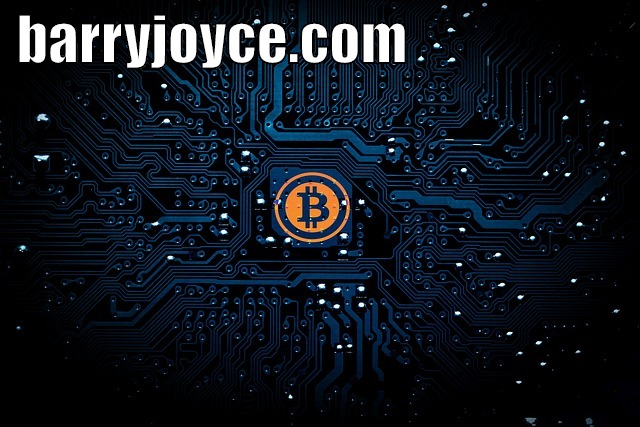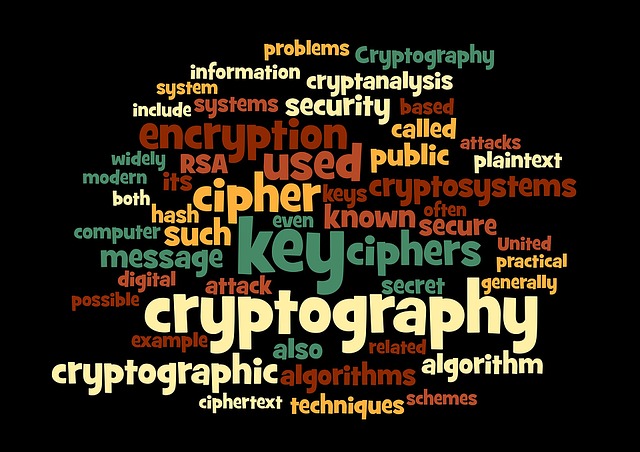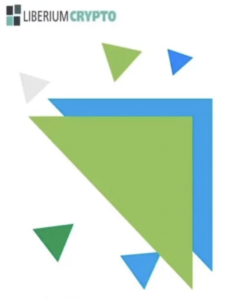Cryptocurrency & Blockchain
Cryptocurrency & Blockchain – My topic today is CryptoCurrency and Blockchain, and we are going to go through the basics of what they are, then look at some of the pros and cons and criticism of Cryptocurrency. Since it is often seen by many as the currency of the future we will also look briefly at what sort of challenges it might face in interplanetary and interstellar economies, where communications lag might make checking someone’s bank account balance a decade long process and where advanced automation might let you make perfect copies or forgeries of almost anything.
On top of that we will also looks at some alternative uses for Blockchain which include some surprises like maybe being able to use it for conducting elections with a maximum of privacy and minimum of fraud. Before we can get into any of that we do need to cover some basics about currency and money in general and define some terms and concepts.
I am going to try to keep this as brief and intuitive as possible, so for those of you wanting more detailed looks at certain aspects of it there will be a number of links to more detailed papers in the episode description. Banking is not usually considered an exciting aspect of technology and futurism, but it is a very important one so I will try to make it as interesting as possible. Money begins replacing direct trade of goods, or bartering, when you start having issues with what is called a ‘coincidence of wants’.
Cryptocurrency & Blockchain
 Which is to say if Frank the Fisher wants something he needs to find someone who wants fish. If Frank wants bread, but Bob the Baker does not want fish, then Frank Fisher has to find someone who wants fish and has something Bob Baker wants. In an increasingly specialized society that can result in a much longer chain of exchanges and you probably will lose a little bit on each step in the chain, even if just because you are spending time trading goods that could be spent fishing.
Which is to say if Frank the Fisher wants something he needs to find someone who wants fish. If Frank wants bread, but Bob the Baker does not want fish, then Frank Fisher has to find someone who wants fish and has something Bob Baker wants. In an increasingly specialized society that can result in a much longer chain of exchanges and you probably will lose a little bit on each step in the chain, even if just because you are spending time trading goods that could be spent fishing.
You make money to have something everyone wants so you can just sell your fish to someone who wants them.
Ideally this should be something light, durable, easy to identify, and hard to forge. There’s a couple ways you can do this. The first way is representative money, and this is where some token is used in place of an item. Say a note that the person who has the note is entitled to fifty sacks of grain – Cryptocurrency & Blockchain
Certificates from gold smiths who kept gold securely locked up for other people is another old example and one of the ways paper money came to be in common use. This often leads to fiat money, the one mostly in use nowadays, and a type of representative money where it is a bit nebulous what is being represented.
Fiat currency is one where it isn’t representing any specific thing except maybe trust and stability. Trust is a huge factor in any representative money, of course, you need to trust you can redeem a grain token for the amount of grain it says it is worth. This is also where we get floating currency, which is what Bitcoin is and why were are looking at this. Here the money is not tied to any specific commodity like gold or grain but simply exists and floats around in value. I make a million tokens and tell people they are the only legal tender anymore, good for any transaction or debt.
Now for these million tokens I made, nobody actually knows how much it is worth at first and it will just float around in value until it finds a comfortable place to more or less settle at Cryptocurrency & Blockchain
For the first couple days people might say one token will buy five sacks of grain, then a few days later it might be three sacks instead and finally settle at four, though it will always fluctuate at least a little. But there is no commodity backing this money. The second type of money is the complete reverse. Commodity money, where the money itself has value and is reasonably compact and durable. You wouldn’t want use bananas or a haunch of meat.
Obsidian arrowheads might have been used way back in prehistory, being useful, but also light and durable. Precious metals are a common example but can often slowly mutate into a representative fiat currency. You pretty much have to alloy gold or silver if you want to use them as a coin for instance since they are soft, and your coins need to be hard to make tampering with them harder.
Cryptocurrency & Blockchain
Silver coins usually included a fair amount of copper, and often the amount slowly increased too, even though the coins were said to have the same value. At one point in the Roman Empire the silver coins being minted contained less than 2% silver.
So coins often take on a certain amount of trust value, though most commodity money eventually does. Commodity money might seem the same as barter at first, where people just exchange items that have worth, but it differs from barter because one type of item ends up being what everything else gets valued in, if you have twenty different items you no longer need to know how much each is worth in terms of the others, just their value in that one key commodity.
Barter systems often mutate into commodity money, and while this is uncommon nowadays we still see it pop up a lot. Barter is common after a disaster for instance, but we often see it develop in prisons, and even in schools, where kids will trade lunch items or toys.
Often you will see a commodity currency arise, cigarettes being the classic example from prisons. And it is almost inevitably a single item, this follows from something called Gresham’s Law, which holds that if you have two commodity currencies in play that people have to accept, pretty soon the one that is seen as more valuable, more good, will disappear from circulation. This is easiest to view in terms of coins, as all the silver coins minted last year with 90% silver will start disappearing from circulation as the new ones with only 80% silver come in to circulation. People start removing the less debased and more valuable coins. It can happen with more classic commodities too, the nicer obsidian arrowheads stop getting traded in favor of cracked ones, or the cigarettes that are not as old and mangled don’t go into circulation and you end up with almost empty crumbled tubes people have removed every fleck of tobacco from Cryptocurrency & Blockchain
If people start trading cans of coffee around, pretty soon all that will be left is the cans of decaffeinated coffee, which is entirely worthless.
Now if everybody is still fine using this as currency all is well though it is now not really a commodity currency anymore. The negative context on this is that it gives people an incentive to misbehave and act dishonestly, which is generally considered a bad thing. It becomes more profitable to game the system then to actually do something productive, so you are not only not doing something productive like growing wheat or mining metal but actually hurting other people for your living. So we see a progression toward fiat currency in modern times and that combined with technology tends to lead toward digital and electronic money. Physical money, like paper money and coins, is decidedly in the minority these days. Unsurprisingly transactions of money tend to be pretty heavy on encryption too, but cryptocurrency is a sub-type of digital money, people often assume they are the same thing. Technically you probably don’t even need digital money to have cryptocurrency but the logistics of doing it without computers would be a bit mind boggling.
Obviously encryption is a big part of Cryptocurrency & Blockchain, and to do that safely you need lots of computing power, and rapid transmission of information is handy too.
But let us examine the basic concept in a more primitive setup instead. Let us revisit Frank the Fisher and Bob the Baker from earlier. Bob is open to taking fish this time but Frank says he has none today, but he still needs bread. He will gladly pay Bob with a Fish on Tuesday if Bob will give him some bread today. Bob does not particularly trust Frank, he smells kinda fishy after all. Frank offers to write it down, an IOU or promissory note for one Fish, but they do not really trust each other and want witnesses and records. So Frank writes down on ten slips of paper, “Frank owes Bob one fish” and Bob hands one to each of the villagers who wander into the bakery during this time, and Bob now has 10 different people he can call on to witness this debt of one fish.
So he gives Frank a loaf of bread, and Frank says great, he is sure he will catch plenty of fish before then and takes a bite of the bread.
Frank says next week is the right time to catch catfish by the ton. Bob groans, he hates catfish and says so, Frank looks apologetically down at the loaf he is chewing and shrugs. Now, Gabby the Gardener, who had just come in at the tail end of this with a bushel of tomatoes for trade, says she loves catfish.
Okay says Bob, this one is easy. He takes back the ten slips of paper, from the 10 people, that say Frank Owes Bob one fish and scratches out his name and puts in Gabby’s name, and gives her only 4 loaves of bread of bread for her bushel of tomatoes instead of the usual 5. So now Gabby can redeem one fish from Frank any time even though she wasn’t part of the original deal and Frank didn’t actually agree to it.
The debt has been transferred. Now Frank cannot easily erase his debt by sneaking into one of the other villagers homes and changing what the paper said or destroying it or bribing people to lose them.
He would have to do this with 10 villagers, which would be way too difficult to be practical. If there was any discrepancy in what the villagers’ papers said, the majority would overrule any corrupted minority. In addition, it’s a fair sized village of a lot more than 10 people and he does not remember most of the people Bob gave them to. So, by giving a lot of people information about the debt, everyone is sure that it will be accurately recorded. Also, by spreading the information to many people, none of whom have a stake in the transaction, nobody involved has to be trustworthy. Cryptocurrency & Blockchain
That means you can trade with anyone, even if you don’t like them, trust them, or know them, such as folks from a neighboring village. That makes for much easier trade, which tends to be handy.
Though it would not be for our example because we would end up with huge ledgers crowding people’s houses that folks have to barge into in the middle of the night and spend time hunting for each transaction and every copy of it. Obviously computers and the internet help with that, and we can finally move on to Cryptocurrency. Bitcoin, the best known of the Cryptocurrency & Blockchain, is basically this village on a grand scale. The strips of paper, the public ledger of the debt or transaction, is the blockchain. Frank, the original issuer of credit, is the Bitcoin miner, the person who physically creates the units of currency. The big difference between Bitcoin and our village is that the village uses a commodity-backed currency, in our case fish, but Bitcoin is a floating currency. That means it is not ultimately backed by any commodity.
Its value only lies in the difficulty of creating Bitcoin with computers.
More on that in a moment. The other big difference of course is that all your awkward ledger keeping is now being done on computer and by computer, not by hand on paper. This ledger of transactions is called a BlockChain. A BlockChain is a database of who transferred what to whom and when it happened. It differs from just a plain old spreadsheet in that it is broken up into batches of transactions, called blocks, and distributed all over the place, with chains leading to appropriate blocks.
Multiple copies of each block exist, but nobody has to have them all, which is nice if you are not a village of a few hundred but several billion people all over the planet each conducting a dozen transactions a day.
Obviously our paper ledger system could not handle something like that. Nor could it be easily encrypted and decrypted to allow privacy. This, by the way, is where the money is actually stored. There’s no physical form or location of it nor file for a specific bitcoin, something that sometimes confuses folks. Now the next problem of this sort of currency is that you have to have some sort of control over how much of it is around, and how much if any new coins get made.
Cryptocurrency & Blockchain
Bitcoin’s approach to this is to have miners, who are basically mining new coins by keeping the blockchains up and running. There’s an elaborate and computation heavy process you have to go through to compete for a new coin that relates to the process of maintaining the blockchains themselves.
So the system keeps running because the only way to mine new coins is to keep those ledgers. It is a nice setup since it ensures the people mining the new coins always have a motive to maintain the system. But for practical purposes this amounts to huge computational race to get that next coin, because maintaining those ledger does not take nearly as much computing power as that computing power would be worth in actual dollars. But the reward is based basically on who is doing the most mining. Let me give a quick non-computer analogy. Thirty years from now there are very few libraries leftover, the hard copies of the books are just too expensive to maintain. Then a big computer virus comes through and just scrambles all the data.
Fortunately one very wealthy billionaire who still collects books realizes she has a hard copy of almost everything. She wants copies made and fast, so she tells people that every day she is going to hand out big chest of gold.
She randomly picks a dozen books out of her collection and says whoever made a copy of those books today wins, and if many people have made one of those then whoever made the most copies win. And she’s going to check a few random pages out of each and also every page needs to be timestamped and has to be from today. If no one has one of the books no reward is given, but it is a big chest of gold.
Thing is, as long as your odds of winning making it profitable to crank out books, you will keep doing it, so anyone keeping track of all the money spent on paper and ink and copier repairs for everyone involved will notice that amount of money is going to rapidly rise till it isn’t much less than the chest of gold is worth Which raises two of our first popular criticisms of Cryptocurrency & Blockchain.
First, since the folks most likely to win a race are those with the most computational power, the currency is arguably based on the commodity of computational power, or for our last example, who owns the most and best copy machines. That’s not the criticism, most currencies are based on something even if it is a bit abstract and this is the information age where computers are king. The criticism is it gives people an incentive to steal other people’s computing power and electricity, as it is arguably easier to hack a few million people’s machines to run a program in the background just computing away then to buy yourself a lot of computers.
Or for our book analogy, people break into other people’s homes to steal their paper and pens.
Second, these computational races are wasted processing power. They are arguably not doing anything productive and they are not doing a lot of it. I saw one article that said over a hundred times more processing power was being spent on Mining than what Google has in total. Processing power costs money and energy, a lot of energy, and we as a civilization are not exactly brimming with cheap renewable energy. Now that is an entirely valid criticism but I personally have to reject arguments by folks who say that means Bitcoin and other crypto currencies are not Green. A classic mint, run by dragging metals out of the ground or cutting down trees for paper, is also not exactly super-environmental friendly, and paying lots of people to stand at coin or printing presses or guarding those presses and vaults is not exactly productive either.
Plus we already use a lot of computers and electricity for financial transactions today. So it is a valid point but only in comparison to what we do now and I have not seen anyone who raised this one do such a comparison. The other objection, about hacking people’s computers to steal their processors, is more valid, and this comes back to Gresham’s Law which I mentioned earlier Cryptocurrency & Blockchain.
Again the mining process sucks up a lot of processing power and electricity, but it serves the purpose of keeping the system up and running. If people can steal other people’s processing power and electricity to do the job it becomes better to do that then to honestly mine by buying and maintaining a top quality system of your own. Of course we also have the concern of hacking people’s actual accounts and stealing their bitcoins, but that is an existing problem of any electronic commerce.
Now the rebuttal to that is while BitCoin mining was originally expected to use people’s CPUs, before long it was found that graphics cards were way better at it, and not long after that we had the emergence of specialized processors, called ASICs, Application Specific Integrated Circuits, in this case specific to bitmining, which hugely outperform both normal CPUs and graphic cards at this task, costing much less to do much more mining.
This decreases the motivation to hack other people’s regular old computers – Cryptocurrency & Blockchain
So that was a good objection but is less so now with ASICs. You don’t break into people’s houses to steal their pens and notebooks when you have some top line copy machine that turn pages on its own and Xerox them, because very few people will have one lying around their home. Same reasoning mining firms don’t break into your house trying to steal your non-existent multi-million dollar excavator or the shovel in your shed. They have no incentive to go to the effort of doing that and risk going to jail for it. We also see cooperative efforts where miners team up and divide a coin when they get one, probably not a surprising outcome in light of Game Theory.
Incidentally I am lifting quite a few of these criticisms from an essay by Sci-fi Author Charles Stross, which I will attach in episode description.
He is quite critical of Bitcoin, as you might guess from the title “Why I want Bitcoin to die in a fire”, and there are some good rebuttals to his arguments so I will also link an article by Daniel Jeffries, “Why Charles Stross Doesn’t Know a Thing about Bitcoin”, which was printed in BitCoin Magazine, and so may not be that neutral.
Another of the objections raised hits at what many see as Cryptocurrency’s biggest strength, which is anonymity.
This is after all an unregulated and untraceable type of money. So it permits a lot of nasty transactions to be conducted with greater ease and less risk. Contract killings, selling drugs, trafficking in people, and a lot of other even more heinous things, can be conducted with less risk to people who might otherwise be caught easier and who might be more likely to engage in such behavior when there is less risk of getting caught. Of course it is not entirely anonymous since a careful study of IP addresses can potentially expose a transaction, meaning investigators find it irritating because of how hard tracking a transaction is while users find it irritating that it is possible at all.
The other big problem is tax evasion, it is kind of hard to monitor people’s incomes if they are doing all their exchanges in this type of currency. Now, again, many people say that is a big plus, and that obviously depends on your personal ideology about governments and taxes so I won’t comment on that.
We’ve got more to cover still, so you can see some of the other criticisms and rebuttals in those links I provided. Another interesting thing about this sort of concept is it is not just limited to money. When I was getting asked by a lot of the audience to cover this topic, which is a bit outside my normal topic zone, I got approached by Edwin Rosero, one of the audience members. He’s an artist and musician and he was experimenting with an application called Ascribe that uses a similar technique to bitcoin in order to allow folks to market limited editions of their artwork with validation of authenticity.
Obviously with digital mediums you cannot stop anyone from making and distributing as many copies as they want. Normally in art you’ve got the original and then you have copies of it. That includes paintings, there’s a good few companies that will print you out a Van Gogh for a couple hundred bucks with digital accuracy of reproduction on a nice canvas just as good as the original, and these are entirely legal and respectable enterprises, newer works tend to be more expensive simply because they are giving the artist a royalty on the work.
The ability to track and authenticate authorized pieces, while in its infancy, offers some alternatives to copyright piracy. Edwin donated two of his works to the channel, one appropriately titled Bitcoin and the other, Archeometry, which had caught my eye. So Blockchain, this concept of distributed and tamperproof ledgers, has non-currency alternative applications, sometimes called altchains.
One ironic application is the exact opposite of the anonymity application many like about Cryptocurrency, in that you can use blockchain to establish and confirm identity. Part of the point of blockchains is to allow us to track who did what and when via a huge distributed and constantly updating database so you can extend that out to permit verification of identity or authenticity in the case of artwork or contracts.
Something called Smart Contracts are an example of this where essentially the distributed database has an “If X happens, do Y”, so I could put out a contract X, say, get this episode a million views by next Thursday, get Z amount of money, and that contract is out there verified to pay up against that eventuality.
A person could put out a contract, good for say a thousand bucks, and a buy-in to grab the contract of a thousand bucks, so if it isn’t met that is forfeit as penalty with Cryptocurrency & Blockchain
It circumvents a lot of lawyer clauses in contracts and the need for a lawyer, and it does appear these concepts are gaining some ground in asset trading and crowd-sourcing. It also circumvents classic escrow accounts, these being funds held by a third party, and those tend to charge fees, highly automated ones could basically minimize or eliminate those. Now I have mentioned that it can be used to validate identities with both discretion and certainty, that leads to an obvious application: voting. At the time this episode is coming out we have a major election coming up in the United States and as sure as the sunrises, regardless of who wins, there will be issues raised about the legitimacy of the election.
Voter fraud, tampering with ballots, privacy of ballots, and so on are always major concerns in any electoral process and rightly so.
There is also always a strong desire to make voting more electronic to save money, elections are incredibly expensive, and I mean on the operating end too not just the campaigning end, and I’m very familiar with both, I am after legally obliged to be. Many of those costs are things you could normally reduce to pennies on the dollar with electronics. Problem is, electronic voting scares people even more than electronic commerce and banking so we basically use paper for everything.
Yet we will probably transition to doing this electronically as time goes on. I have difficulty imagining a high-tech futuristic society still using pen and paper ballots. The ability to have a genuinely secure electronic election offers huge advantages in money and time saved and convenience for voters, which would presumably increase voter participation and also maybe let you have elections on more things and more often. Things like Blockchain could hold the key to something like that being possible.
If so, I would rate this application as the most useful of the alternative applications and maybe even equal to the primary banking application itself.
Okay, so I mentioned near the beginning we would talk about interplanetary and interstellar economics and banking, and some of the hurdles to doing that. Lots of couples have joint bank accounts either can withdraw funds from. You’re not limited to just two people either. Right now I can open up a joint bank account with 9 buddies, we start up a club and put money in it we can each withdraw from and we can all get an ATM and debit card and go make purchases. Now that is fine on Earth. Communications time is under a second and banks can keep copies of their database at multiple places at once, so you only lose access to accounts if the terminal you are using is offline.
If people are all over the solar system though the game changes a lot because you have got light lag of hours, not seconds Cryptocurrency & Blockchain
You and your spouse could put your whole savings in a joint checking account and travel to Mars and Jupiter when they were on the other side of the Sun, an hour communication time each way, and each of you could withdraw the full balance and have two hours before any alarm bells would even go off. A group of ten people could all borrow heavily and stick everything they can get their hands on into one joint account and withdraw it all from ten different locations scattered around the solar system and again have hours to make a get away. Or even days, the solar system doesn’t stop after Neptune and Pluto, a point we will be looking at in November. Neither does the galaxy, at the interstellar scale it could be years before anyone even knew about the theft. Now there’s workarounds to this, most have some sort of downside to them like going back to hard currency or banning joint accounts or having long lag times on any major transaction.
The channel has a lot of clever folks on it so I’m sure some might think of better ways.
Those are just off the top of my head because I have never seen anyone look into this issue before. Banking is kind of boring and doesn’t tend to show up in science fiction too much in any real detail. For that matter I have only seen one academic article on cryptocurrency over interplanetary distances, Abrahim Ladha’s “Hypothetical Problems concerning the Theory of Relativity on Cryptographic Currency Implementations”, and it is sadly a neglected area, interplanetary and interstellar economics.
About the only paper of significance was Paul Krugman’s 1978 “Theory of Interstellar Trade” which he wrote as a bit of joke back when he was teaching at Yale. He treats the topic seriously enough, which is mostly how to treat interest rates when you have time dilation from interstellar travel, but the tone is humorous and non-rigorous.
Still it’s a good read so I will attach both his and Ladha’s paper in the episode description too. We just can’t get around that time lag concern for cryptocurrency and blockchain without some sort of Faster Than Light Communication but we would have similar problems with other systems too and banking long predates light-speed communication so I imagine it is a manageable problem. It is worth keeping in mind though when we try to consider civilizations on the scale of solar systems or galaxies, what are often known as Kardashev 2 and 3, or K2 and K3, civilizations.
Which is our topic for next week, and we will spend some more time considering the difficulties such civilizations have in terms of staying unified while exploring just how immense they are and what sort of awesome things they can do even if they are not all that technologically advanced or unified. We’ll also be exploring some more of these difficulties at a much more-near term scale in an upcoming video on Colonizing the Outer Solar System. There’s a number of things we did not get to cover today. We have not talked about the legal aspects, which are numerous, nor the issues with hacking, which are quite serious too Cryptocurrency & Blockchain.
We also kept the math, programming, and computer code to a bare minimum. The links provided in the episode description will help you navigate those matters if you want to learn more about the specifics.
Personally I have no idea if Bitcoin and other Cryptocurrency & Blockchain will catch on, though I am quite sure some of the other applications of Blockchain will. Our goal today was just to cover the basics with a bit more detail than most articles do and with a little less hype and little more intuitive explanations, so hopefully now you have a clearer image of what this stuff is. Again next week we look at the Kardashev Scale, and the schedule after that is not fixed just yet but the topics coming up for November are going to be Bioforming and Gene Tailoring, and our last Patreon Winning Topic, the Stellar Compendium, where we will demystify a lot of terms and concepts and look at some of stranger star like Dark Matter Stars or Quark stars.
As mentioned we will be looking at Colonizing the Outer Solar System too.
Lastly, fellow Youtuber Joe Scott and I will be collaborating on a pair of videos on the Great Attractor, and so I will be finishing up the Dark Trilogy on Dark Matter, Dark Energy, and Dark Flow with the episode, “Dark Flow & the Great Attractor”. The exact dates for any of those are still hazy, so make sure to subscribe to the channel for alerts when those and other episodes come out, and if you enjoyed the episode, make sure to like it and share it with others. Until next time, thanks for watching, and have a Great Day!.











